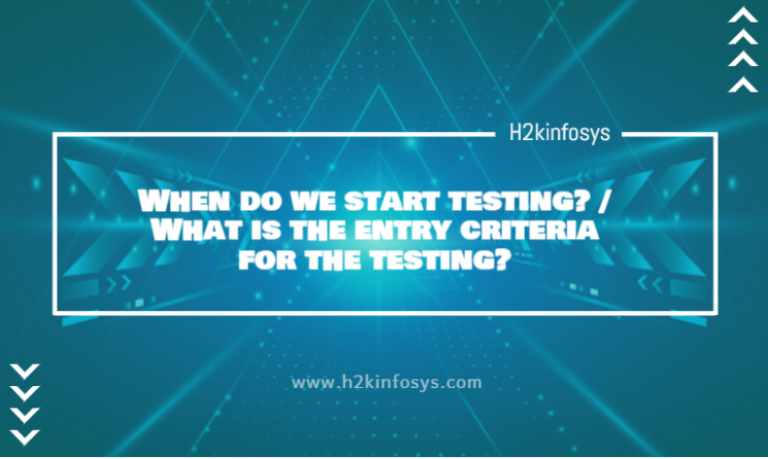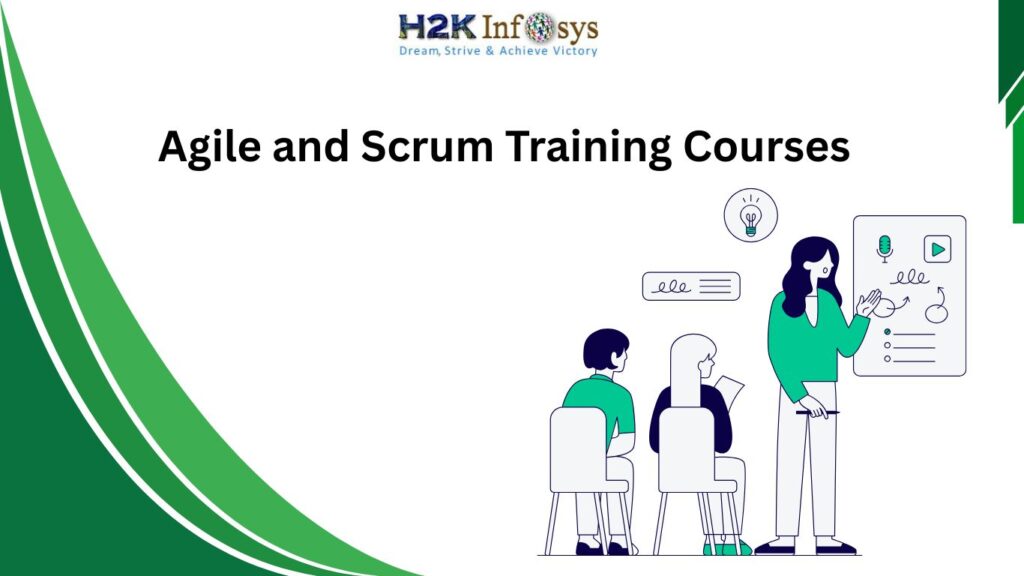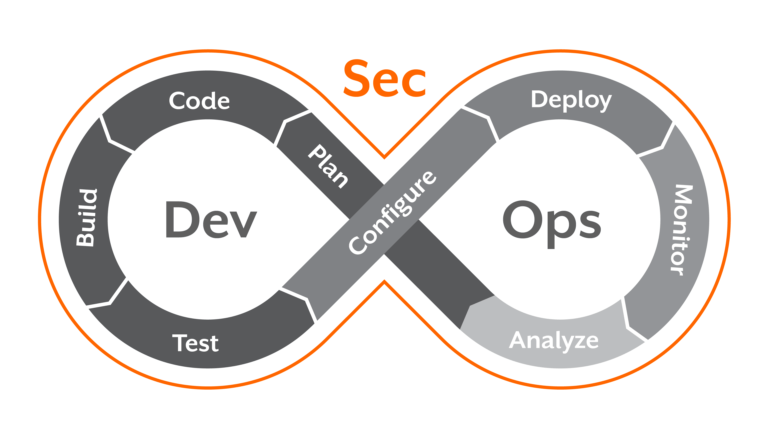In software development, one of the most critical phases is testing, and the timing of when to start testing in Quality Assurance (QA) can greatly impact the success of a project. While testing early and often is widely advocated, understanding the specific entry criteria for when testing should commence is essential for ensuring a smooth and efficient process. This article will dive deep into the key entry criteria that determine when to start Quality assurance training for beginners exploring various methodologies, best practices, and factors that influence the decision.
Here Few Entry Criteria When to Start Testing in QA
Understanding Entry Criteria in QA
Entry criteria are the conditions or requirements that must be met before a particular phase of testing can begin. These criteria act as a checkpoint to determine whether the testing process is ready to proceed. If the entry criteria are not met, starting the testing process prematurely can lead to incomplete testing, missed defects, and delayed project timelines.
In the context of QA, the entry criteria for testing ensure that testing begins when the system is stable enough to test, reducing the likelihood of time wasted on rework or testing incomplete features. It helps the QA team focus on quality and prevents unnecessary backtracking.
Why Entry Criteria Matter in QA Testing
Setting clear entry criteria ensures that testing is efficient, thorough, and meaningful. Without it, testing efforts may begin too early or too late, leading to various challenges such as:
- Increased defects and rework: Testing incomplete or unstable software can cause a higher number of defects, leading to rework that delays the project.
- Wasted resources: Starting testing too soon can waste resources, as testers may have to repeatedly test code that isn’t fully ready.
- Delayed project timelines: If the entry criteria aren’t met, testing may drag on longer than expected, which can affect the overall project schedule.
By ensuring that entry criteria are clearly defined and met before testing starts, QA teams can improve the efficiency and effectiveness of the testing process, avoid unnecessary delays, and ensure a higher-quality end product.
Key Entry Criteria for Different Types of Testing
Different phases of testing require distinct entry criteria based on the objectives of the testing stage. Below are the key entry criteria for various testing stages.
Unit Testing
Entry Criteria:
- The development of individual code modules or units is complete.
- Code has passed static analysis and is free from syntax errors.
- Unit test cases are written and available for execution.
- A testing environment for unit tests is ready.
- Dependencies on other modules are either mocked or not required.
Unit testing is typically the first phase of testing and focuses on the smallest components of the software. Entry criteria for unit testing are usually straightforward, as they focus on the readiness of individual components rather than the entire system.
Recommended To Read Also: Software testing course and placement
Integration Testing
Entry Criteria:
- All individual modules have passed unit testing.
- The integration of modules or components is complete.
- Test cases for integration testing are prepared and available.
- Data flow between integrated modules is stable.
- Any required external interfaces or systems are available and functional.
Integration testing ensures that individual modules work together as intended. The entry criteria ensure that the individual units have been sufficiently tested, and the connections between modules are ready to be tested as a cohesive system.
System Testing
Entry Criteria:
- The complete system build is available and has passed integration testing.
- The system environment is stable and mirrors the production environment.
- Functional and non-functional requirements are documented and understood.
- System test cases are prepared and available for execution.
- All dependencies, such as external APIs or third-party services, are available and functioning.
System testing focuses on validating the entire system’s functionality, performance, security, and usability. It ensures that the system behaves as expected when fully integrated and under simulated real-world conditions.
User Acceptance Testing (UAT)
Entry Criteria:
- System testing has been completed, and the system is considered stable.
- All major defects have been addressed, and no critical issues are outstanding.
- UAT environment is set up and mirrors the production environment.
- End-user documentation and training materials are available.
- Test cases or scripts for UAT have been developed and approved by stakeholders.
User Acceptance Testing (UAT) is typically the final testing phase and involves the end users or stakeholders. The entry criteria ensure that the system is stable enough for end users to evaluate its functionality, usability, and readiness for production.
Common Entry Criteria to Consider
Regardless of the type of testing, there are some common entry criteria that apply across all testing phases:
- Availability of Test Environment: The test environment should be stable, configured, and ready to use.
- Complete Test Cases: Test cases should be written, reviewed, and approved before testing begins.
- Availability of Test Data: Test data should be prepared and loaded into the test environment.
- No Critical Bugs: Any critical defects or blockers that could hinder the testing process should be resolved.
- Deployment of Software: The software or system under test should be deployed to the test environment, and a baseline version should be established.
- Sign-off from Development Team: The development team should confirm that the code is ready for testing and meets the agreed-upon quality standards.
Impact of Agile Methodology on Testing Entry Points
In Agile methodologies, testing is often integrated into the development process, which means that the concept of entry criteria becomes more fluid. In Agile, testing is an ongoing process, and QA teams are involved from the early stages of development, providing feedback and testing continuously.
However, Agile still benefits from clearly defined entry criteria, particularly when transitioning from one sprint to the next or when moving from development to release phases. Continuous integration (CI) and continuous delivery (CD) practices also help automate much of the testing, allowing teams to meet entry criteria more efficiently.
Risks of Delaying Testing
Delaying testing until later stages of development is one of the most common mistakes in software projects. The risks of late testing include:
- Increased cost of fixing bugs: The later a defect is discovered, the more expensive it is to fix. Early testing helps identify and resolve issues when they are easier to fix.
- Longer development cycles: Delayed testing often leads to longer development cycles as defects discovered late require rework.
- Lower quality: Without testing early, there’s a higher chance that critical issues may be overlooked, leading to a lower-quality product.
- Unstable product: The product may be prone to crashes, performance issues, or security vulnerabilities if not tested thoroughly.
Best Practices for Defining Entry Criteria
To ensure the best outcomes from testing, it’s essential to establish clear entry criteria for each phase of the testing lifecycle. Here are some best practices for defining entry criteria:
- Collaborate with stakeholders: Involve all relevant stakeholders (developers, testers, product owners) when defining entry criteria to ensure alignment.
- Review historical data: Use insights from previous projects to set realistic and relevant entry criteria.
- Document clearly: Make sure that entry criteria are documented, communicated, and understood by all team members.
- Flexibility: While entry criteria should be clearly defined, it’s important to maintain some flexibility to accommodate changes in the project.
The Role of Entry Criteria in Continuous Testing
In continuous testing environments, particularly in DevOps or Agile models, testing is performed at every stage of the software development lifecycle. The entry criteria for continuous testing ensure that automation tools are integrated into the pipeline, allowing tests to be triggered after every change.
Key entry criteria for continuous testing include:
- Test automation tools in place: Automation tools are set up, and scripts are available for execution.
- Integration with CI/CD pipelines: The testing process is fully integrated with CI/CD pipelines to trigger tests after code changes.
- Metrics collection: Performance metrics and test results are collected and analyzed continuously.
- Availability of stable test environments: Test environments must be stable and closely mirror production environments.
Final Thoughts:
Entry criteria provide a structured approach to determining when testing should start, helping teams avoid common pitfalls and ensure the project remains on track. By defining and adhering to entry criteria, teams can increase efficiency, reduce the cost of defects, and deliver a higher-quality product. Whether in traditional waterfall projects or agile environments, entry criteria play a crucial role in ensuring successful QA testing outcomes.






























